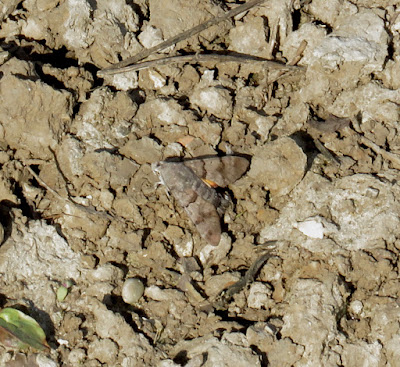Two swifts were flying over the houses near the Glebe on Monday morning, while the cuckoo provided a nice close view as it flew overhead near the caravan site. Two sedge warblers, five reed warblers and a corn bunting were heard singing along the Strood seawall. A male marsh harrier hunted along the dyke, another one soared with a buzzard high over Ray Island and a third marsh harrier was hunting low over Feldy Marshes. Two other common buzzards were seen in the area.
Along the Strood channel were six whimbrel, 3 avocets and two black-tailed godwits.
Late afternoon a peregrine and a common buzzard flew west together over the Firs Chase garden, the buzzard drifting quickly over to Old Hall, while the peregrine circled a few times above the Hard.
From the Esplanade a great northern diver and 3 common terns were seen offshore on Monday by Steve Entwistle, who later saw a swift and sparrowhawk in Alexandra Drive.
At East Mersea near the Oyster Fishery, ten common terns, Cetti's warbler, lesser whitethroat and common whitethroat and blackcap were seen by Martin Cock, who also reported a pair of avocets, nine brent geese, cuckoo and a calling tawny owl near Reeveshall on Monday.
Near Meeting Lane Michael Thorley reported a yellow wagtail and two blackcaps on Monday.
A smart green hairstreak made its first appearance of the spring on Monday 27th in the Feldy View field. Also on the wing there were orange-tip, small white, holly blue and peacock butterflies.
A little egret photographed by Jonathan Bustard by the boardwalk at St Peters on Monday.
On Sunday 26th four swifts were flying over the Strood seawall during the morning walk. Two sedge warblers and seven reed warblers were singing from the dyke, four yellow wagtails were seen and a cuckoo was heard calling. The rusty coloured swallow was by the Dabchicks again.
Along the channel were 45+ whimbrel gathering as the tide covered the mud, also 3 avocets, 2 grey plover, 5 black-tailed godwits, two common terns and 3 calling pairs of Mediterranean gulls. In the skies above ten common buzzards were noted and a male marsh harrier displaying to a female high over Bonners Barn.
A common buzzard and common tern flew over the Firs Chase garden on Sunday, also a goldcrest singing here. Three swifts and two house martins were seen on Sunday flying over Ian Black's Mersea Avenue garden.
Eight yellow wagtails were seen near the seawall and Feldy View, while one sedge warbler and two reed warblers were singing while a corn bunting flew off the saltmarsh and onto the fields. A muntjac deer was seen strolling mid morning amongst the caravans at the Firs Chase site.
A red kite was seen flying west over Martin Cocks house in The Coverts on Tuesday afternoon.
This male wheatear was photographed by Andy Field on the seawall near the Strood Hill end, on Wednesday 29th, a female wheatear was seen earlier at the other end of the seawall.
Along the seawall were two sedge warblers, six reed warblers, cuckoo, two common terns, avocet, whimbrel and four common buzzards.
A walk around St Peters on Wednesday produced 3 whimbrel, 10 common terns, four Mediterranean gulls, 60 brent geese on Cobmarsh and a pair of shelduck there too.
Two Mediterranean gulls were also seen by Ian Black at the Dabchicks on Wednesday.
A great northern diver, lesser whitethroat, whitethroat, blackcap, chiffchaff and a pair of shelduck were seen by Shaun Bater on a walk on Wednesday between Seaview and Waldegraves.
A whimbrel flew over Martin Cocks West Mersea house in the Coverts on Wednesday.
Recent woodpecker reports have come recently from Adrian Amos near the top of Oakwood Avenue with a green woodpecker seen and a great spotted woodpecker heard drumming. Also in Yorick Avenue a great spotted woodpecker might be nesting in the Passfield's garden.
Orange-tip and holly blue butterflies have been reported in Adrian Amos' garden as were bee flies.





















































